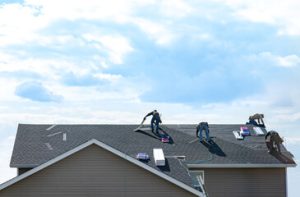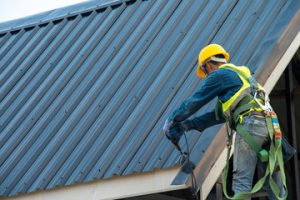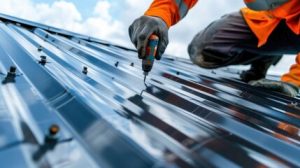Roofing Company Helena MT is no longer just about fixing leaks or replacing shingles. They have become innovators shaping how people experience comfort, energy, and safety in their spaces. Their work goes beyond shelter, touching sustainability, technology, and even design identity. This evolution is often overlooked but deeply impactful.

The idea of a roof has changed with modern needs. It is no longer only about keeping rain out but also about creating efficiency. Roofing companies now explore materials that reflect heat, conserve energy, and support long-term savings. A roof has become part of the larger ecosystem of sustainable living.
Technology is at the center of this transformation. Drones are now used for inspections that once required risky climbs. Sensors detect leaks before they spread into costly damage. Digital imaging allows precise planning before a single tool is lifted. These advancements raise both safety and accuracy.
Design has also entered the conversation in new ways. Roofs are now seen as a statement of style rather than just a necessity. Different shapes, textures, and patterns redefine how buildings look. Roofing companies must balance beauty with durability in every project.
Climate change has introduced new demands. Roofs must endure harsher winds, stronger storms, and unpredictable weather. This requires constant research into materials that can resist extreme conditions. Companies that adapt quickly lead the industry forward.
Sustainability is now deeply tied to roofing solutions. Many projects focus on reducing waste by recycling old materials. Some roofs are designed to host gardens or solar panels, turning empty surfaces into productive assets. These ideas shift the perception of what a roof can be.
Another emerging concept is the “living roof.” This involves using vegetation to insulate buildings and promote biodiversity. Roofing companies trained in these methods must combine construction skills with ecological awareness. It transforms the roof into a functional green space.
Safety standards have grown more rigorous as the industry has advanced. Workers undergo specialized training not just for installation but for handling new technologies. Modern equipment ensures fewer accidents and better results. This focus reflects a respect for both craft and human life.
The economics of roofing have also shifted. It is no longer measured only by initial cost but by lifetime value. Durable materials may cost more but reduce expenses over decades. Roofing companies now present solutions as investments rather than temporary fixes.
Communication between roofing companies and clients has evolved too. Digital platforms make it easier to show designs, timelines, and progress. Clients can watch updates in real time, reducing confusion and building trust. This transparency changes how services are delivered.
In rural areas, roofing companies face unique challenges. Transporting materials over long distances can affect efficiency. Solutions must be adapted to local conditions with creative problem-solving. These adjustments demonstrate resilience in practice.
Urban projects bring a different complexity. Skyscrapers and high-density housing require advanced equipment and planning. Roof access and safety become central concerns. Roofing companies here act as engineers as much as builders.
Environmental regulations have pushed innovation as well. Companies must reduce emissions, control noise, and minimize disruption during projects. Compliance is not just legal but also part of their reputation. This pressure drives continuous improvement.
The introduction of modular construction has changed how roofs are built. Prefabricated components allow faster assembly and less waste. Roofing companies skilled in these methods can deliver projects with greater speed. This efficiency is highly valued in modern markets.
Another new idea is smart roofing. Integrated systems can adjust insulation based on temperature or alert owners to potential damage. Roofing companies developing these technologies are redefining expectations. Roofs are becoming interactive rather than passive.
Cultural shifts have influenced roofing as well. Many clients now see the roof as part of their personal identity. The style, material, and design represent values such as eco-consciousness or tradition. Roofing companies must listen closely to these preferences.
Training has become more advanced than ever before. Apprenticeships now include digital literacy, environmental knowledge, and advanced safety. Roofing companies invest in education to build skilled teams. The result is higher quality outcomes for clients.
Unexpectedly, roofing also plays a role in health. Poorly built roofs can cause mold, leaks, or overheating. These directly affect the wellbeing of occupants. Modern roofing companies view health as part of their responsibility.
Resilience has become a major theme. In areas prone to disasters, roofs must withstand floods, heat waves, and storms. Roofing companies test and innovate to ensure survival under stress. Their work provides security in uncertain times.
Recycling practices have expanded. Old roofing materials are now turned into new products instead of filling landfills. This creates a cycle that benefits both business and the environment. It demonstrates how waste can become opportunity.
Collaboration has grown across industries. Roofing companies now work alongside energy experts, architects, and environmental planners. The roof is no longer isolated but part of a bigger vision. This multidisciplinary approach enriches the outcomes of projects.
Digital records are changing accountability. Every step of installation can be logged and shared. Clients can verify quality without climbing a ladder. Roofing companies using these systems gain credibility.
Seasonal challenges push roofing companies to adapt their methods. Cold climates require insulation focus while hot regions prioritize heat reflection. This diversity of needs makes the industry highly flexible. The ability to adjust ensures continued relevance.
Consumer awareness has risen too. People now research materials, costs, and environmental impact before hiring. Roofing companies must provide honest information and innovative choices. The balance between transparency and expertise builds loyalty.
Artistry has not disappeared from roofing despite modern tools. Craftsmanship remains central to achieving a flawless finish. Many companies preserve traditional techniques alongside new technologies. This blend creates roofs that are both strong and timeless.
Digital modeling allows clients to visualize projects before they begin. Roofing companies can show exactly how a finished roof will look. This prevents disappointment and builds confidence. The use of virtual tools has become standard practice.
Crisis response roofing has also emerged as a specialty. When disasters strike, fast and reliable repairs are critical. Roofing companies skilled in rapid deployment support community resilience. Their work often goes unnoticed but remains vital.
Even small residential projects now reflect innovation. Homeowners expect roofs that save energy and match their aesthetic values. Roofing companies treat even minor jobs with the same forward-thinking approach. This consistency raises industry standards.
The concept of roofing warranties has changed. Instead of limited coverage, clients now expect long-term guarantees. Roofing companies adapt by ensuring materials and work are built to last. This strengthens trust and reputation.
Future trends point toward roofs that do more than cover. Energy generation, water collection, and even food production are possibilities. Roofing companies are preparing to embrace these new functions. This makes the future of roofing exciting and limitless.
Roofing companies have grown from simple contractors into innovators of modern living. Their work now shapes energy efficiency, sustainability, and even lifestyle. They stand at the intersection of tradition and progress. This evolution proves that roofing is no longer just a cover but a canvas for future possibilities.

